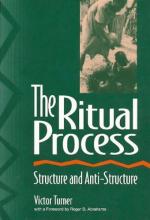|
This section contains 2,803 words (approx. 10 pages at 300 words per page) |

|
In 1913, the British scientist Henry G. J. Moseley determined the frequency and wavelength of x rays emitted by a large number of elements. By this time, the number of protons in the nucleus of some of the lighter elements had been determined. Moseley found the wavelength of the most energetic x ray of an element decreased systematically as the number of protons in the nucleus increased. Moseley then hypothesized the idea could be turned around: he could use the wavelengths of x rays emitted from heavier elements to determine how many protons they had in their nuclei. After Moseley's work, the idea that the periodic patterns in chemical reactivity might actually be due to the number of electrons and protons in atoms intrigued many chemists. Among the most notable was Gilbert Newton Lewis of the University of California at Berkeley.
Lewis explored the relationship between the...
|
This section contains 2,803 words (approx. 10 pages at 300 words per page) |

|


